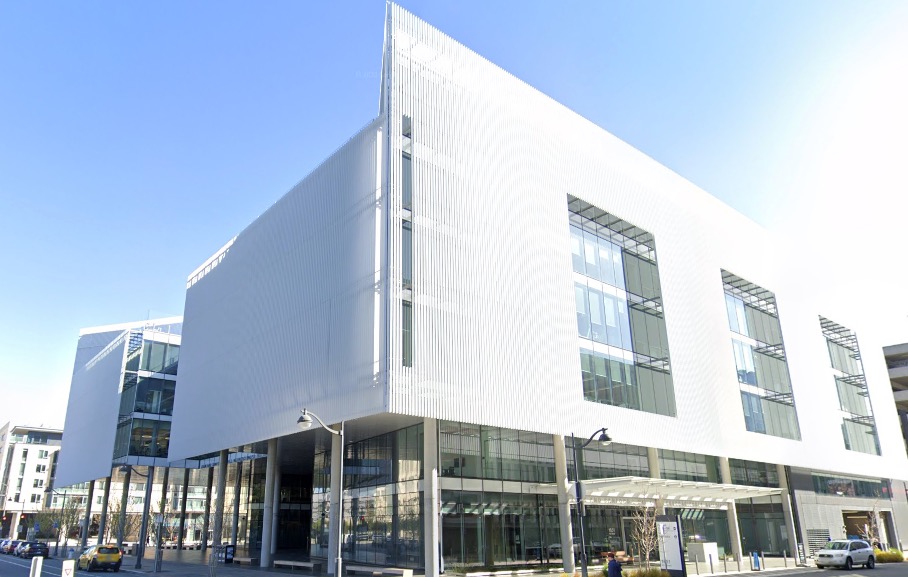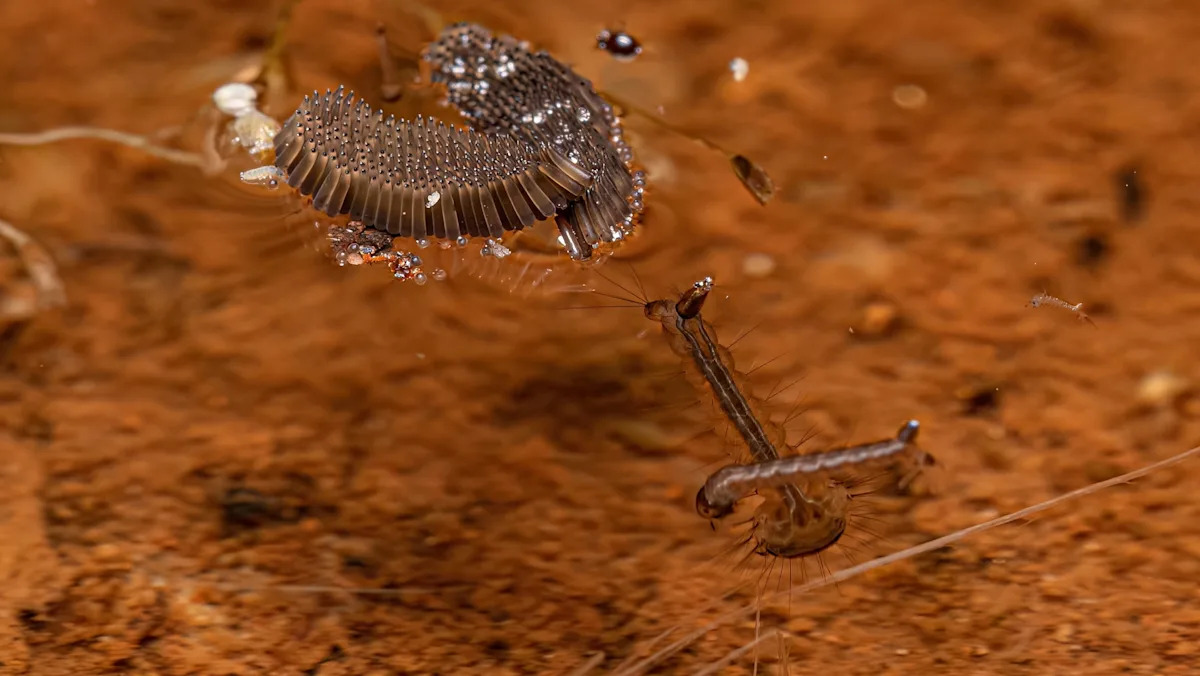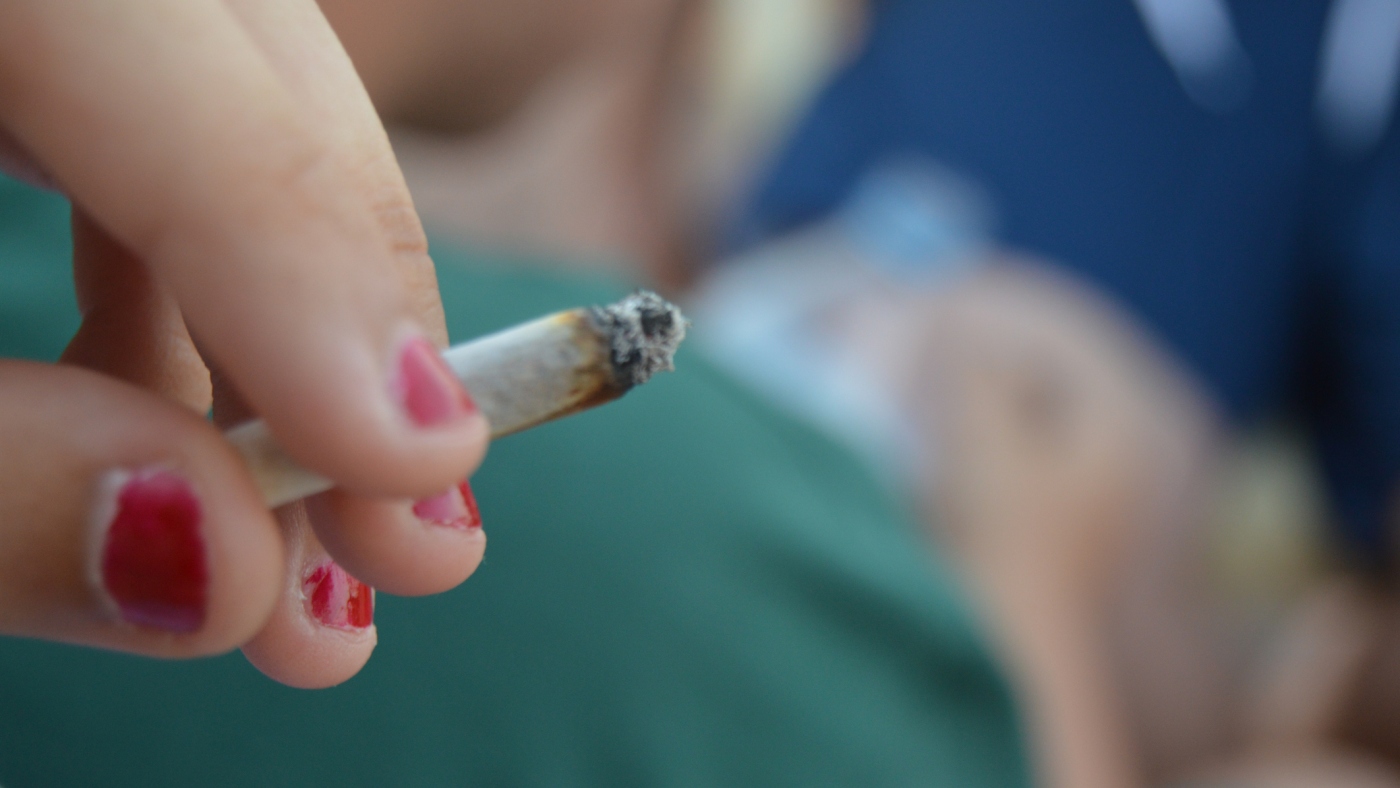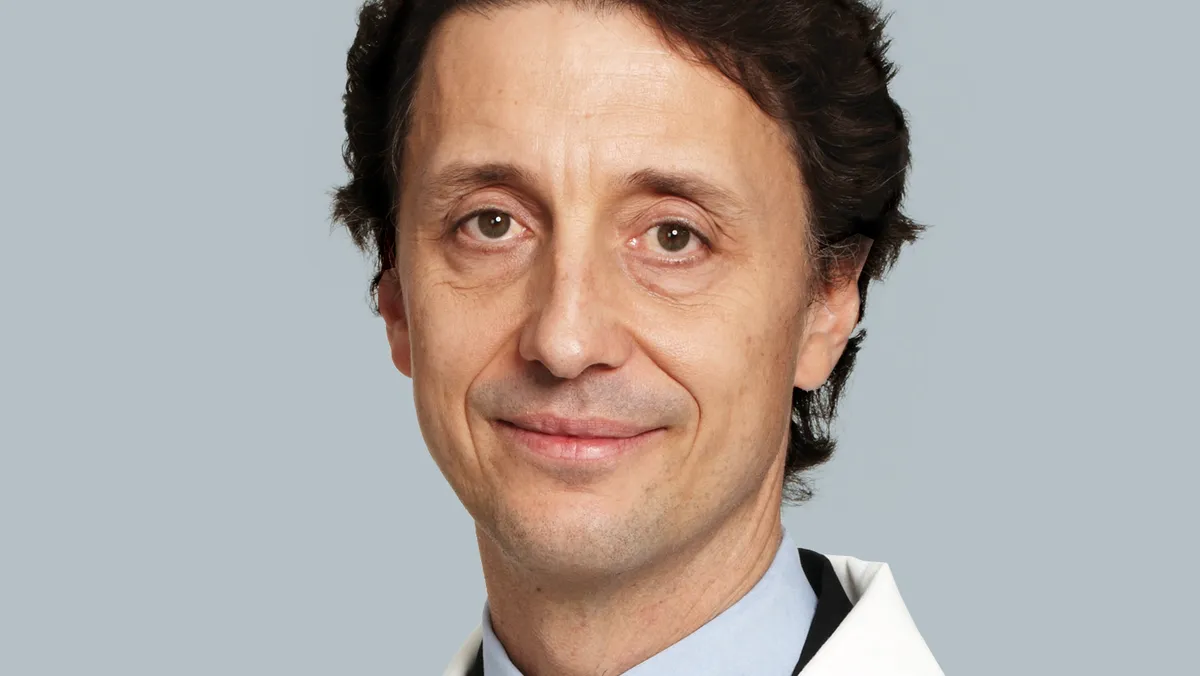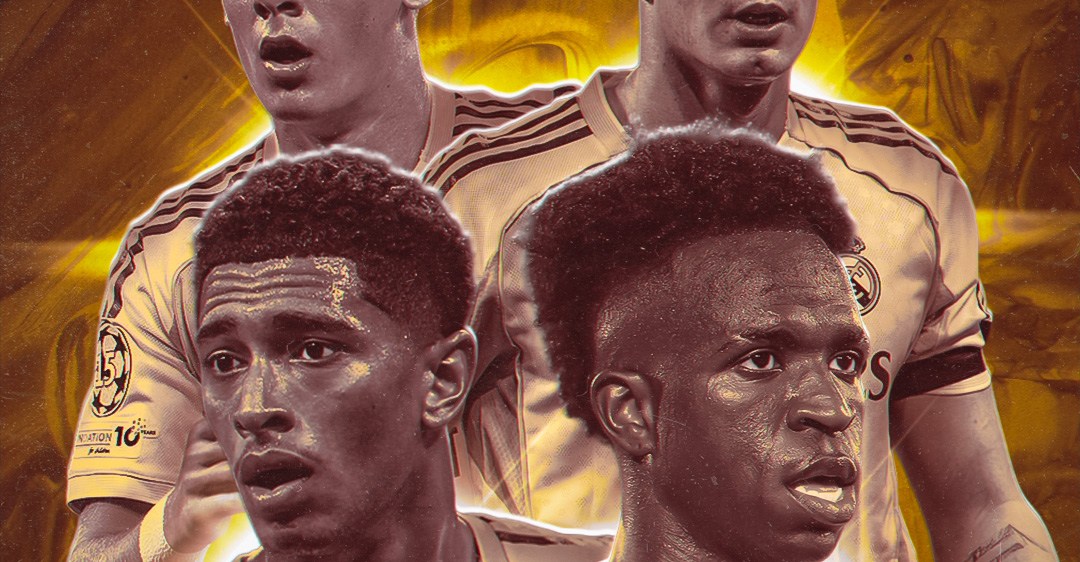These observations — where I look at Real Madrid’s history, its players on loan, Castilla, tactical tidbits, and other relevant thoughts — are now a regular thing. All previous editions can be found here.
Welcome to a post-Clasico edition of my observations column. Let’s dive into the return of the world’s best midfielder, our young ball-player center-back, and more:
1. Alvaro Carreras defense
I underestimated the impact Alvaro Carreras was going to have on Real Madrid. After a full scouting report diving on film, data, and having deep conversations with football scouts and people in Portugal, the conclusion I came to was this: He is a solid two-way player. He’s not Paolo Maldini on defense and he’s not Marcelo on offense, but that’s OK. A competent presence is needed at that position. Carreras’s two-way ability to join the attack, help escape pressure with good on-ball play — while being solid defensively — is a welcome addition to the squad.
Was that wrong? Is he better than just a ‘good player’? My own analysis of my own analysis, now that we’ve had the chance to see him as a consistent starter, is that I undersold him. He’s already racked up 18 blocks through 10 La Liga games.
Xabi-ball generally limits the amount of times Real Madrid’s wing-backs are isolated against wingers in 1v1 duels in deep positions. Most of Carreras’s work is carried high up the pitch. He wins the ball in the opponents’ half, and if the press gets beat, he sprints back and stops breaks reliably.
But he’s also proven himself as a worthy 1v1 shield. It was almost insulting how casually he made Lamine Yamal disappear in Sunday’s Clasico.
Carreras had shaky moments on the ball against Atletico Madrid and Juventus. His confidence took a hit after the Derby.
But generally, he takes good care of the ball, and, under pressure, can find the escape valve. He can drop his shoulder to cut past his man inside, or play the ball down the wing. When players take him on, he comes out on top more often than not.
Have you ever seen someone look so unbothered on defense?:
2. Arda Güler passing, moving, and shooting
It’s hard to blame Arda Güler for anything this season. He’s one of Europe’s niftiest creators, top-five in the Big Five Leagues in both key passes and assists. He leads La Liga in through balls. He’s slinging with verticality, vision, and with perfect weight. Kylian Mbappe is feasting on those Güler passes. The Turk has been actively pressing, and his one big criticism, ‘not showing up in big games’, seems a bit unfair given the sample size of big games he’s played in is tiny. His cameo against Atletico Madrid (one goal, one assist, great composure in tight spaces) was an example where he was the team’s best player in a humiliating loss where no one else showed up. In El Clasico, he made a mistake which led to Fermin Lopez’s goal, but was great outside of that — vital to the team’s ball progression.
Güler’s other critique has been his defense. But he’s taken strides this season both as a tracker and a presser, and his lack of muscle is supposed to be counter-balanced by the surrounding scheme, Tchouameni, Valverde, Bellingham, and a collective press.
It’s been nice to see Güler’s problem solving in real time as he downloads his surroundings before taking action:
Simple but fundamental: He drags one marker away from him by telling Asencio to make the overlap run, and with the new found space and time, he switches it effortlessly to the far side. Later in the play, he moves off the ball and gets himself into a shooting position. Güler is connected to everything that Real Madrid do in the build-up phase.
Güler has so far met the demands of Xabi Alonso. With the rise of Eduardo Camavinga and the return of Bellingham, he will get the needed help in midfield.
3. Dean Huijsen’s insistence on verticality
Dean Huijsen refuses to play a sideway pass. Everything has to thread the needle, even through traffic.
Huijsen should have license to hit those passes. He’s elite at them. Real Madrid desperately needed a ball-playing center-back. As seen above, he can get the team in good attacking positions quickly by patiently waiting for the right passing lane to open up, then firing it off with zero hesitation.
But Huijsen will also have to be careful on how much he insists on those passes. He is a high risk, high volume vertical passer. The passing — and the range of it — can be breathtaking to watch, but it can also put the team in really difficult positions. Against Atletico Madrid in the September Derby, Huijsen missed those passes, and Atletico nearly scored, twice.
He will have to find that balance. Not all teams will gift passing lanes like Kairat above. More compact, elite teams that understand how to squeeze the pitch will force you into difficult positions, and they dare you to make those high risk passes — but Huijsen found the right pass out of pressure on against Barcelona on Sunday night over and over again.
Huijsen continues to duck out of pressure well while carrying the ball forward. He, like everyone on the team, will have to be careful when it comes to more aggressive, coordinated pressing teams.
Heading into Sunday night’s Clasico, I was a bit confused about the pessimism, in part because Barcelona had look much worse than Real Madrid in the games leading up to it. But I understood that some of the concern was down to: A) Real Madrid’s track record in big games stemming from last season; and B) Barcelona’s psychological hold over Real Madrid from last season.
But I knew Barcelona have looked uncomfortable against teams who can exploit the shocking amount of space they unapologetically leave behind their defensive line. They live and die by Flick-ball, meaning, they will always hold a high line and risk getting cooked — even if it’s the last second of the game and that decision is suicidal. PSG, most recently, punished their naivety. Sevilla massacred them.
Last season, the math generally checked out for them. Flick knows his high line will get exposed enough, but also knows that squeezing opponents up the field, playing offside traps, ushering his goalkeeper off his line quickly, and sheer offensive firepower will enable them to win 99% of games, even if the price to pay along the way is teams like Rayo Vallecano and PSG taking points off them.
But maybe there’s something more to it now. Other teams who didn’t take points off Barca — Levante, Newcastle — gave them hell. Iñigo Martinez is gone. Some of Barcelona’s depth is questionable. Can they sustain what they did last season?
I wrote these two paragraphs before the game but it went unpublished:
Is Real Madrid’s attack, orchestrated by Güler and led by the world’s best player, Mbappe, better equipped to to capitalize? Can Real Madrid get high quality two-way production from their wing-backs? Don’t discount how important the world’s best wing-back duo — Achraf Hakimi, Nuno Mendes — were in neutralizing Barcelona. If Real Madrid do start punishing Barcelona’s defense and scoring more, will their own defense be able to prevent being outscored?
Finally: PSG’s press gave Barcelona all sorts of problems. Their ability to escape their own third collapsed once Pedri left the field. Barca is a team that doesn’t like to get punched. They want teams to sit and give them the ball and put them into their comfort zone. There’s lots of previous learning on this.
I am glad to see that Xabi Alonso got it spot on against Barcelona. It was the first time all season where you could truly see the fruits of the labour — the growing pains of a new identity — paying off. Real Madrid made Barcelona more uncomfortable in that first half than they did the entirety of last season over the course of four games. When energy waned in the second half and they couldn’t sustain their press, they put in an incredible defensive shift to close the game.
As I always say, Barcelona don’t like getting punched in the mouth. They prefer teams to sit back and enable them passing comfort. Everyone has now realized that it’s silly to let them have so much respect. Credit to Alonso.
5. Vinicius Jr inflicting fear again
Up until that point, the Villarreal game was the closest thing to ‘peak Vini’ we had seen this season. Then the Clasico eventually rolled around, and Vinicius put Jules Koundé, Frenkie de Jong, Lamine Yamal (and whoever else dared to come his way) inside a torture chamber.
‘Peak Vini’, to me, is defined as someone who transcends normal proceedings of a football match. He inflicts fear, tortures right-backs, and does things most people can only do in video games.
Despite not playing the full 90 in several games this season, Vinicius is putting up ‘peak Vini’ numbers again, embracing his role while also being proactive and breaking lines. He leads the Big Five leagues in carries into the penalty area (53), progressive passes receive (128) — a barometer for activity between the lines off the ball — and progressive carries (69).
Even not at his best, the statistical production was there, but the Villarreal game just before the international break, and then Clasico on Sunday, were the games you’d expect from 2024 Vinicius: Torturing a wing-back all game so bad, said player wish he’d never signed up to play football.
‘Peak Vini’ is a complete ceiling changer for this team.
6. Bellingham, silky touches
It’s safe to say Real Madrid are still far away from hitting their ceiling despite being top of the league table — but they are showing the right signs, and it’s ultimately a good sign that a team that looks this scary, is still not at its best. There’s lots to improve on on both ends of the field. Xabi Alonso is hoping that Jude Bellingham’s return solves problems and raises the bar of the team.
Said wish was fulfilled in Clasico.
Challenges will come on making all the pieces fit together. The team is deep in some areas, and thin in others. A lot of the team’s best players overlap. Not everyone can get their best position. Bellingham and Güler are at their best just behind the attackers. Alonso’s vision is for them to play together with Güler being the deeper of two — or perhaps interchangeable within flowing game states.
Bellingham has always been a very intelligent ball progressor. He’s known for taking multiple silky touches and turns under pressure, but he’s equally as good as getting the ball up the field with just one touch:
Bellingham doesn’t get the ball back, but he knows exactly which zone he needs to sprint to after releasing the ball out wide.
These kinds of one-touch sequences are beautiful:
Bellingham plays defense at an elite clip and does stuff like that, above, and more, on offense. Hence why he should raise the team’s ceiling on both ends. His assist in Clasico was something only the elite players can do on a consistent basis. He was the best midfielder on the pitch — unsurprising given he’s the best midfielder in the world.
It might be understandable that a team going through a stylistic overhaul has not yet fine-tuned their new system to perfection. Pressing has never been a big part of Real Madrid’s DNA as a full-blown identity. Real Madrid, throughout their history, have been a bit of everything, shapeshifting between low blocks, mid-blocks, counter-pressing, direct football, and counter-attacking football.
But implementing a full-blown aggressive press with a high line is a different kind of overhaul — a different demand the team is still trying to acclimatize itself to.
There are signs. As Matt Wiltse wrote about on Managing Madrid:
The team’s recoveries have risen sharply: total recoveries are up from 69.3 to 76.1 per game, opponent-half recoveries from 24.4 to 31.1, final-third recoveries from 4.2 to 5.5, and recoveries immediately after a loss from 28.8 to 35.5.
Possession has also climbed—from 60.5% to 64%, or 67.1% excluding the match at Anoeta when Madrid played over an hour with 10 men. The philosophy is clear: intensity without the ball to rest with it, pressing smarter instead of harder. As coaches often like to say, “run 10 yards now, so you don’t have to run 50 yards later” .
Despite the statistical improvements. Juventus played through with ease on several occasions. There seemed to be a bit of stagnation with regards to the cohesiveness of the press. But it was highly effective against Barcelona as it had intensity and collectiveness. Everyone got their pressing angles correct. The team is winning most of their encounters right now, and they are winning deservedly. The press is something to monitor when the Champions League knockouts roll around — at least that’s where I’m most excited to see to measure it.
8. The arrival of Tchouameni
Aurelien Tchouameni was already one of the best defensive midfielders in the world when Real Madrid signed him, so trust me when I acknowledge how silly it is to proclaim that Tchouameni — already a Champions League winner — hasn’t ‘arrived’ until now.
But we’ve never seen Tchouameni at this level. He may yet continue peaking over the new few years — but this version has to be pretty close to his apex. He’s mature, composed, rational — insanely gifted and so strong it’s unfair. His ball-winning technique is among, if not, the world’s best.
Remember his quotes on the day of his Real Madrid presentation? That he studied the greats like Michael Jordan and Kobe Bryant? Tchouameni is one of those special players that downloads the game off the pitch as much as he relishes playing on it. Not all players consume the game the way he does. It’s no wonder that he has gotten better and better. The newest iteration under Xabi Alonso has been lights out.
“I can’t say what we train specifically (publicly), but there are changes , different methodologies (between Carlo Ancelotti and Alonso). Some players have changed positions.”
There is more reliance on Tchouameni now than ever, and he has raised the call. He is thriving under that pressure — just as we expected him to the day he signed for Real Madrid.
9. Relentless Mastantuono hustle
In a previous column, I had said that Mastantuono’s expected ‘growing pains’ are largely (highly) tolerable because of how hard he works defensively. Fearless players like him who make mistakes, take risks, and work themselves into the ground on defense are rarely a net negative.
He has only taken his defensive efforts to another level since that last column, buying in more and more into Xabi Alonso’s incessant pressing scheme. Mastantuono has been hunting players, breathing down the necks of every left-back and making them as uncomfortable as possible.
It’s not just Mastantuono. The team’s collective press is part of the ecosystem that feeds into it. But Mastantuono’s energy is infectious. He gives confidence to his teammates — they know he won’t let them down or miss a defensive assignment. Mastantuono empties the tank, balls-to-the-walls, and goes full throttle. It also typically means he’ll be gassed in the second half — a price Xabi Alonso is ok paying knowing the team can build leads in the first half and fresh legs can tag in later in the game.
Mastantuono lacks some of the work of a traditional, line-breaking pacy winger, but he makes up for it in other ways. He is tricky, and does have an explosive shoulder drop and cut. He loves shooting. He’s not playing as prominently now with everyone regaining match fitness, but there is probably a watershed moment on the horizon where he puts away one or two goals and that gets the ketchup bottle popping open — he shoots enough and gets into enough goal-scoring positions that it seems inevitable he will be a contributor of goals as the season and his career progresses.
Can he play deeper or take on an Angel di Maria role? He loves dropping deep for both club and country, and he is a clever ball progressor with his vertical pass-and-move plays. He likes to carry the ball, lay if off, and get himself into a better position.
Mentally, I still sometimes find myself here:
Look at the motor, the verticality, the vision, the link-up. It’s pure chaos to defend — he’s the worst kind of player to have run at you because it’s hard to read the next move when you’re back-peddling.
Mastantuono will lose minutes now with Jude Bellingham and Eduardo Camavinga back — but I don’t think he’ll take a backseat the way some people are expecting. He brings too much to the table as a two-way player.
Perhaps ahead of schedule, Franco Mastantuno made himself a prominent player for the first month of the season as one of the youngest starters in the club’s modern era. Many, including myself, felt his involvement would be gradual, rotational, and more long-term looking. But Xabi Alonso entrusted the Argentine with an eminent role as the team’s primary right winger when the team deployed a 4-3-3 formation.
Mastantuono’s role is very niche, in the sense that his presence almost necessitates a 4-3-3. We likely won’t see him in the midfield, nor will we see him on the left or in the middle. With Jude Bellingham returning, the biggest question mark for me is how Xabi Alonso finds the right balance between Arda Güler, Jude Bellingham, Fede Valverde, Eduardo Camavinga, 4-3-3, and 4-4-2.
Bellingham’s rushed return against Atletico Madrid dropped Mastantuono, and, thus, dropped the 4-3-3. Real Madrid deviated from what worked in every other game this season. Bellingham starting is a no-brainer. The 4-3-3 has worked, and the 4-4-2 with Camavinga looked unstoppable. Putting Bellingham into the attack means you lose the width on the right in favour of more narrow football. Could you shift Bellingham into midfield alongside Arda Güler with Aurelien Tchouameni at the base of midfield? That would mean Fede Valverde plays right-back or takes Camavinga’s right-wing role from the Clasico. (Both options are good.)
These are all ‘good problems’ to manage, and I have no answers — these are merely observations and thought-provoking questions.
First Appeared on
Source link





